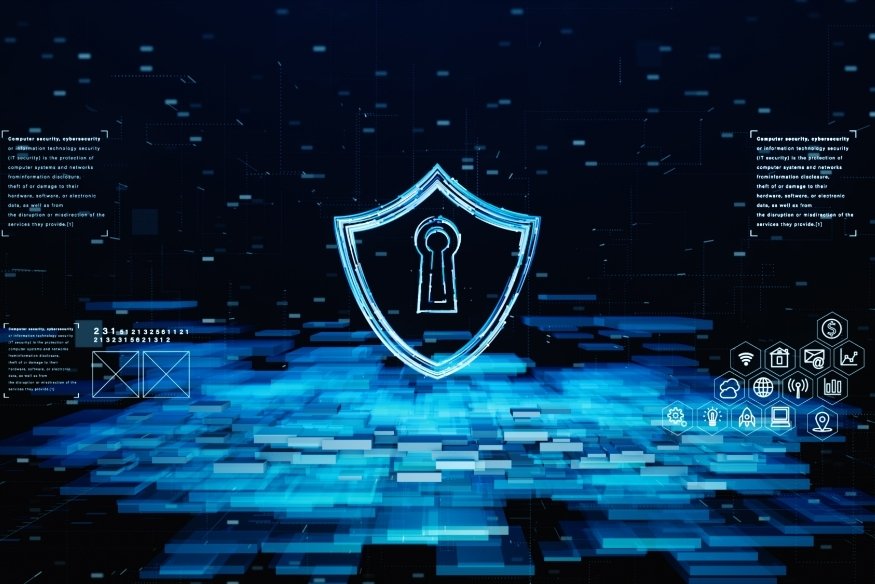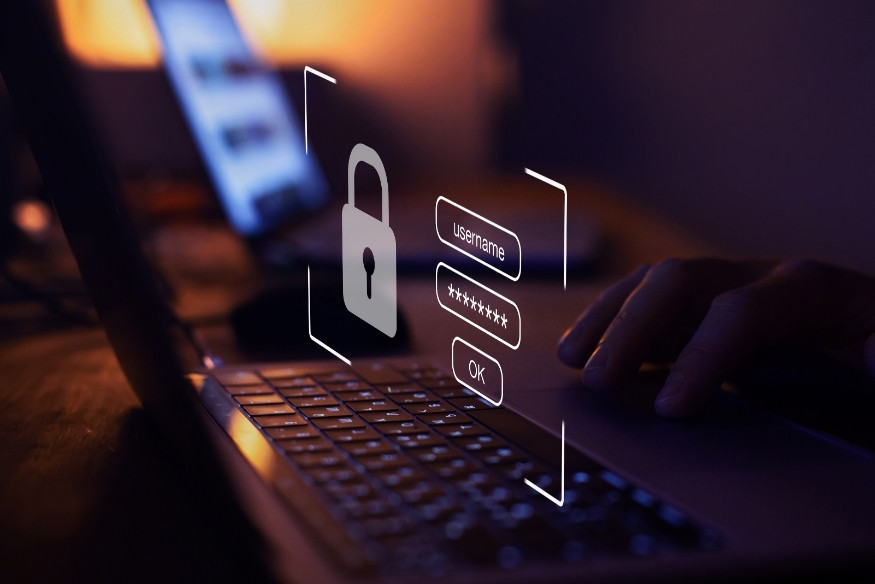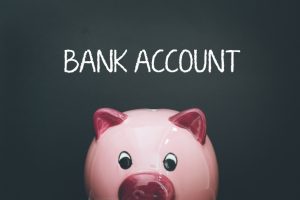In today’s hyper-connected world, knowing how to protect financial info is more important than ever. With the rise of online banking, digital wallets, and e-commerce, cyber threats have become more sophisticated—and more frequent. Your personal and financial data are valuable targets for hackers, identity thieves, and phishing scams.
One of the first steps you can take is to freeze your credit, which prevents unauthorized access to your credit report. This simple action can block fraudulent credit applications before they start. Additionally, it’s crucial to monitor your credit reports regularly for any suspicious activity.
When filing taxes or accessing government services online, use secure identification methods, such as two-factor authentication or virtual ID numbers, to reduce the risk of identity theft. These extra layers of protection can go a long way in safeguarding your most sensitive information.
By staying informed and adopting proactive measures, you can significantly reduce the chances of having your financial info compromised online—ensuring greater peace of mind in a digital-first world.
Key Takeaways
- Freeze your credit to prevent unauthorized access.
- Regularly review your credit reports for suspicious activity.
- Use secure ID numbers when filing tax returns.
- Be cautious when sharing personal and financial information online.
- Stay informed about the latest cybersecurity threats and best practices.
The Growing Threat to Your Financial Security Online

As the digital world continues to expand, so do the threats that put your financial safety at risk. Online transactions, once a convenience, have now become the norm—but with this shift comes increased exposure to cybercrime. From everyday purchases to managing investments, every digital interaction is a potential entry point for malicious activity. Recent government efforts to enhance data protection have highlighted just how important it is to keep sensitive financial information secure.
Common Types of Financial Cyber Threats
Understanding the different types of financial cyber threats is the first step in defending against them. These attacks aim to steal personal and financial data, leading to unauthorized transactions, loss of funds, and long-term credit damage. To better protect financial info, it’s essential to recognize the following threats:
- Phishing attacks: Deceptive emails or messages designed to trick you into revealing sensitive data by impersonating trusted sources.
- Malware: Malicious software that infiltrates your device to monitor activity, steal data, or corrupt files.
- Identity theft: The unauthorized use of personal information—such as Social Security or ID numbers—for financial fraud.
These threats can strike through emails, social media, unsecured websites, or even fake customer service contacts.
Why Consumers Are Increasingly Targeted
With the rise of digital services and online banking worldwide, individuals in highly connected regions have become prime targets for cybercriminals. The combination of digital convenience and increasing data exposure creates vulnerabilities that attackers are eager to exploit.
| Reason | Description |
|---|---|
| High digitalization | Advanced digital infrastructure increases the number of attack surfaces. |
| Widespread online banking | More people using online platforms means more opportunities for cybercriminals. |
| Sophistication of threats | Modern cyberattacks are harder to detect and often mimic legitimate activity. |
To truly protect financial info, consumers must stay informed about these evolving risks and adopt proactive habits that reduce exposure and enhance digital security.
Understanding the Value of Your Financial Data
Your financial data holds significant value—not just to you, but also to cybercriminals who seek to exploit it for profit. From login credentials to bank account numbers, this information can be used to commit fraud, steal identities, and cause long-term financial damage. Understanding how and why your data is targeted is essential if you want to truly protect financial info in the digital world.
What Information Cybercriminals Want
Attackers are after a wide range of personal and financial details. The most commonly targeted data includes:
- Online banking login credentials
- Credit and debit card numbers
- PINs and security codes
- Personal identification numbers (e.g., government IDs, tax numbers)
- Passwords and answers to security questions
Once obtained, this information can be sold on the dark web, used to make unauthorized purchases, open fraudulent accounts, or gain access to sensitive platforms. That’s why safeguarding this data with strong, unique passwords, multi-factor authentication, and secure browsing practices is critical to protect financial info effectively.
The Long-term Impact of Financial Data Breaches
The consequences of a financial data breach go far beyond an immediate financial loss. Victims often face credit score damage, the complicated process of disputing fraudulent charges, and long-term monitoring needs to ensure additional attacks don’t occur. In some cases, it can take months—or even years—to fully resolve the aftermath.
There’s also an emotional toll: the stress of dealing with identity theft, the uncertainty about future security, and the feeling of being violated. These effects can linger long after the financial situation is restored.
The best defense is prevention. Taking active steps to protect financial info today—such as monitoring accounts, using secure connections, and avoiding suspicious links—can prevent major disruptions tomorrow.
Creating Unbreakable Passwords for Financial Accounts

Strong passwords are one of the most effective first lines of defense against cyber threats. With the rapid growth of online banking, investing apps, and digital wallets, ensuring your credentials are secure is essential to protect financial info. Weak or reused passwords make it easier for cybercriminals to breach your accounts—and once one account is compromised, others can quickly follow.
Password Creation Best Practices
To increase the security of your financial accounts, follow these proven password practices:
- Use a combination of uppercase and lowercase letters, numbers, and special characters.
- Avoid predictable elements, such as names, birthdates, or common phrases.
- Choose long passwords—at least 12–16 characters—for stronger protection.
- Use a different password for each account to prevent a single breach from compromising multiple platforms.
These strategies make it harder for attackers to guess or crack your passwords through brute-force methods. Adopting these habits can significantly enhance your ability to protect financial info across all accounts.
Password Management Tools
Managing multiple complex passwords manually is nearly impossible—and that’s where password managers come in. These tools generate, store, and autofill strong passwords, reducing the risk of forgetting them or reusing weak ones. Many also include extra features like breach alerts and two-factor authentication integrations.
| Tool | Key Features | Platforms Supported |
|---|---|---|
| LastPass | Password generation, secure vault, cross-device sync | Windows, macOS, Android, iOS |
| 1Password | Secure storage, travel mode, biometric logins | Windows, macOS, Android, iOS |
| Dashlane | Dark web monitoring, password health reports, autofill | Windows, macOS, Android, iOS |
Using a password manager not only simplifies your digital life but also strengthens your defenses—making it far easier to consistently protect financial info with complex, unique logins across all platforms.
Implementing Two-Factor Authentication
With cybercrime growing more sophisticated, two-factor authentication (2FA) has become one of the most effective tools to protect financial info online. This added security layer reduces the risk of unauthorized access—even if your password is compromised.
How 2FA Works to Protect Your Accounts
Two-factor authentication strengthens account protection by requiring a second form of verification in addition to your password. This second factor may include:
- A code sent to your phone via SMS
- An authentication app, like Google Authenticator or Authy
- A biometric scan, such as a fingerprint or facial recognition
For example, when you log into your online banking, you first enter your password. Then, you must input a unique verification code sent to your device. Without both credentials, access is denied. This makes it extremely difficult for hackers to breach your accounts—even if they manage to steal your login credentials.
Setting Up 2FA on Banking Platforms
Most online banking and financial services now offer built-in 2FA options. To enable it, log in to your account, navigate to the security settings, and look for a section labeled “Two-Factor Authentication” or “Multi-Factor Authentication”.
You may be prompted to choose between:
- Authenticator apps (more secure and preferred)
- SMS-based codes
- Biometric options, depending on your device and platform
Always choose the most secure option available and ensure that your backup methods (such as recovery codes) are stored safely. Enabling 2FA is a quick and powerful way to protect financial info and make your digital financial life more secure.
Secure Browsing Habits to Protect Financial Info
With cyber threats becoming more advanced, developing safe browsing habits is essential to protect financial info online. Every time you access banking platforms, investment accounts, or make purchases, your personal data could be exposed if you’re not careful. Fortunately, following a few simple practices can dramatically reduce the risk of falling victim to cybercrime.
Using HTTPS and Secure Connections
One of the easiest ways to stay protected while browsing is to ensure that the websites you visit use HTTPS (Hypertext Transfer Protocol Secure). This protocol encrypts the data exchanged between your browser and the website, making it much harder for hackers to intercept your information.
Look for the “https://” at the beginning of the web address and a padlock icon in the address bar. Avoid entering sensitive data on websites that lack these security markers.
Private Browsing and VPN Benefits
Using private or incognito browsing mode helps reduce the storage of cookies, cached files, and browsing history on your device. While it doesn’t make you invisible online, it does minimize the amount of traceable data stored locally.
For more robust protection—especially when using public Wi-Fi—a Virtual Private Network (VPN) is highly recommended. A VPN encrypts all internet traffic from your device, preventing cybercriminals from spying on your online activity. This is particularly important when you access banking or financial accounts on unfamiliar networks.
Browser Extensions for Enhanced Security
Security-focused browser extensions add another layer of defense. These tools can:
- Block malicious scripts and phishing attempts
- Warn you about suspicious websites
- Prevent tracking and targeted data collection
Popular extensions include HTTPS Everywhere, uBlock Origin, and Privacy Badger. When used together, these tools can significantly boost your browser’s security and help you protect financial info with greater confidence.
Staying safe online requires more than just strong passwords—it involves ongoing vigilance and smart browsing habits. By incorporating these practices into your daily routine, you reduce the chances of data breaches and ensure a safer digital experience.
Safe Online Shopping Practices

With the rise of e-commerce, online shopping has become part of daily life for millions. While convenient, it also comes with risks that can compromise your personal and financial data. Adopting smart shopping habits is essential to protect financial info and shop with confidence.
Verifying Legitimate E-commerce Sites
Before making a purchase, ensure that the website you’re using is authentic and secure. Start by checking for:
- A secure URL beginning with “https://”
- A padlock icon in the browser’s address bar
- Proper grammar and branding on the site
- A professional checkout process
Always read reviews from verified customers on independent platforms. Be cautious of websites offering extremely low prices, unfamiliar brand names, or pressuring you with countdowns or limited-time deals—these are common red flags for scams.
Payment Methods with Added Protection
Choosing the right payment method is crucial when making purchases online. For better protection, use:
- Credit cards, which often include fraud protection and chargeback options
- Secure third-party services like PayPal, which offer buyer protection for disputed transactions
Avoid direct bank transfers or prepaid debit cards, as these typically lack sufficient fraud protection. Using secure payment methods is one of the simplest ways to protect financial info during online transactions.
Understanding Your Consumer Rights
Many regions have strong consumer protection laws for online purchases. These laws often give you the right to:
- Cancel or return purchases within a specific period (e.g., 14 days)
- Receive a full refund for faulty or misrepresented products
- Dispute unauthorized charges
Understanding your legal rights as a consumer empowers you to take action if something goes wrong. Always check the website’s return policy, terms of service, and customer service availability before finalizing a transaction.
By shopping only on trusted sites, using secure payment methods, and knowing your rights, you create a safer online shopping experience and better protect financial info from digital threats.
How to Protect Your Financial Info During Banking Activities
Online banking offers convenience, but it also demands caution. To protect financial info during digital banking activities, it’s crucial to adopt a combination of smart habits, technical safeguards, and proactive monitoring. Here’s how to reduce your exposure and keep your accounts secure.
Monitoring Account Activity Regularly
One of the most effective ways to detect fraud early is by reviewing your account activity frequently. Make it a habit to check your transaction history at least once a week. This allows you to spot unauthorized activity quickly—before it becomes a bigger issue.
You can access this information through your bank’s mobile app or online portal. Most banks also let you download your transaction history for deeper review. If anything looks suspicious, report it to your bank immediately to avoid financial loss and better protect financial info.
Setting Up Banking Alerts and Notifications
Real-time alerts are an essential line of defense. Configure your banking app to send instant notifications for any unusual or sensitive activity:
- Transaction alerts for purchases or withdrawals above a specific amount
- Login alerts for attempts from new devices or unfamiliar locations
- Low balance alerts to avoid overdraft or suspicious depletion
These automated messages keep you informed and help you act quickly if your account is at risk.
Secure Wi-Fi Practices for Online Banking
Your connection matters. Using unsecured public Wi-Fi while accessing your bank accounts is risky, as hackers can intercept your data. To stay safe:
- Only perform online banking on trusted, password-protected networks
- Use a Virtual Private Network (VPN) when accessing financial accounts in public
- Avoid logging in on shared or public computers
| Wi-Fi Type | Security Level | Recommended for Online Banking |
|---|---|---|
| Public Wi-Fi | Low | No |
| Home Wi-Fi | High | Yes |
| VPN Connection | High | Yes |
By combining frequent monitoring, custom alerts, and safe connection practices, you take critical steps to protect financial info and ensure that your online banking activities remain secure.
Mobile Device Security for Financial Apps
As mobile devices take center stage in personal finance management, ensuring their security has become absolutely essential. From banking and budgeting apps to investment platforms, your smartphone often contains a direct link to your most sensitive financial data. That’s why adopting strong mobile security practices is one of the smartest ways to protect financial info and reduce exposure to cyber threats.
Securing Your Smartphone Against Threats

To begin, make sure your device is equipped with the right defenses. Use biometric authentication, such as fingerprint or facial recognition, or a strong PIN to lock your phone. Keeping your operating system and financial apps up to date is also vital, as updates often include security patches that fix known vulnerabilities.
Another key step is to download apps only from trusted sources—preferably the Apple App Store or Google Play Store. Avoid third-party marketplaces, which are more likely to host malicious apps. If possible, use a mobile security app that scans for malware, phishing links, and suspicious activity. These combined layers of protection create a strong barrier that helps you protect financial info effectively.
Best practices for smartphone security include:
- Using biometric authentication or strong passwords
- Keeping your system and apps updated
- Avoiding unofficial app stores
- Installing mobile antivirus or security tools for real-time protection
Safe Practices for Mobile Banking
While mobile banking apps offer unmatched convenience, using them carelessly can expose your personal data to significant risk. To bank safely, it’s essential to connect only through secure, private Wi-Fi networks or mobile data connections—never through public Wi-Fi, which is vulnerable to interception. Always enable two-factor authentication (2FA) on your financial apps to add an extra layer of protection. Additionally, remain alert to phishing attempts via SMS or email, and avoid sharing sensitive information through unverified or suspicious messages.
| Safe Mobile Banking Practices | Benefits |
|---|---|
| Use secure networks | Protects against data interception and hacking |
| Avoid public Wi-Fi | Reduces risk of man-in-the-middle attacks |
| Enable two-factor authentication | Adds an extra layer of login security |
By combining these device-level protections with smart digital habits, you can confidently manage your money from anywhere—and protect financial info every time you use your mobile device.
Recognizing and Avoiding Financial Scams
As financial scams become increasingly sophisticated, staying alert is more important than ever. Cybercriminals are constantly developing new tactics to trick individuals—especially through digital channels where trust is harder to verify. To protect financial info, it’s essential to know how to recognize warning signs and respond wisely.
Common Phishing Techniques
Phishing is one of the most widespread tactics used in financial scams. Criminals often impersonate trusted institutions—such as banks, payment platforms, or government agencies—and send messages asking for personal details, login credentials, or payment confirmations.
To stay safe, examine emails and messages carefully. Be suspicious of spelling mistakes, generic greetings, and links that look unusual. Never click on attachments or provide sensitive information without verifying the source.
Red Flags in Emails and Messages
Knowing what to look for can help you avoid falling into a scam. Some common signs include:
- Urgent or threatening language, such as “your account will be closed”
- Requests for personal or financial information
- Links that don’t match the sender’s usual website
- Poor grammar, odd phrasing, or formatting issues
Taking the time to verify any suspicious communication helps you avoid costly mistakes and better protect financial info.
Current Scam Techniques and How to Respond
Scams are constantly evolving, but several types remain especially common. Here’s what to watch out for:
| Scam Type | Description | Prevention Tip |
|---|---|---|
| Phishing | Fake messages asking for sensitive data | Verify the sender’s identity before responding |
| Investment Scams | Promises of unrealistic or guaranteed returns | Research thoroughly and beware of high-pressure offers |
| Fake Invoices | Fraudulent billing or payment requests | Always confirm invoice details before making payments |
By staying informed, questioning suspicious messages, and double-checking sources, you can significantly reduce your risk of falling victim to fraud—and more effectively protect financial info in your daily financial activities.
What to Do If Your Financial Info Is Compromised
Having your financial data exposed can be alarming, but knowing exactly what to do can make a significant difference. Acting quickly is essential to limit damage and protect financial info from further misuse.
Immediate Steps to Take
If you suspect that your financial details have been stolen, take action immediately. Contact your bank or financial institution as soon as possible—they can temporarily freeze your accounts to prevent unauthorized transactions. Next, change your passwords for all affected accounts, especially those linked to banking, email, or digital wallets. Make sure to use strong, unique credentials for each one.
Also, check your recent account activity for unfamiliar transactions, and enable alerts to monitor any further attempts at access. The faster you act, the better your chances of minimizing the impact.
How to Report Financial Fraud
Reporting financial fraud is a critical part of recovering from a breach and helping prevent future incidents. Depending on your country, several channels may be available for filing a report:
| Reporting Channel | Description | Action |
|---|---|---|
| Law Enforcement Agency | Investigates financial crimes and identity theft | File a report through national or local authorities |
| Consumer Protection Office | Helps enforce financial and data protection laws | Submit claims or request support on consumer rights |
| Financial Institution | Works to stop unauthorized activity and restore funds | Contact through customer service or online banking |
Keep records of all communications and actions taken, including screenshots, reference numbers, and confirmation emails. This documentation will be helpful if further legal or financial recovery steps are needed.
Consumer Protection Laws
Many countries have robust consumer protection laws that provide safeguards against fraud and data breaches. These laws often require banks and financial services to maintain strong security practices and to offer remedies in cases of proven negligence or unauthorized activity.
Familiarize yourself with the specific rights and protections available in your jurisdiction. These may include reimbursement for fraud losses, dispute resolution services, and limits on consumer liability if action is taken promptly.
By staying calm, acting fast, and following the correct steps, you can protect financial info, reduce potential losses, and begin the recovery process with greater confidence.
Conclusion: Building a Comprehensive Strategy to Safeguard Your Financial Future

In an increasingly digital world, the ability to protect financial info is not just a precaution—it’s a critical part of managing your personal finances. With cyber threats growing more advanced each year, adopting a comprehensive, proactive strategy is essential for anyone who shops, banks, or invests online.
A strong financial security plan begins with robust password practices and the consistent use of two-factor authentication. These fundamental steps create a secure barrier around your sensitive data. In addition, practicing safe browsing habits, using trusted networks, and staying cautious while shopping or banking online can dramatically reduce the risk of fraud.
Equally important is your ability to recognize scams and respond quickly if your information is compromised. Staying informed, using the right tools, and knowing the proper channels for reporting fraud ensures that you remain one step ahead of cybercriminals.
By putting these measures into action, you build a solid defense that not only keeps your information safe but also allows you to enjoy the convenience of digital services with confidence. With a consistent, informed approach, you can effectively protect financial info and ensure a safer, more secure financial future.









